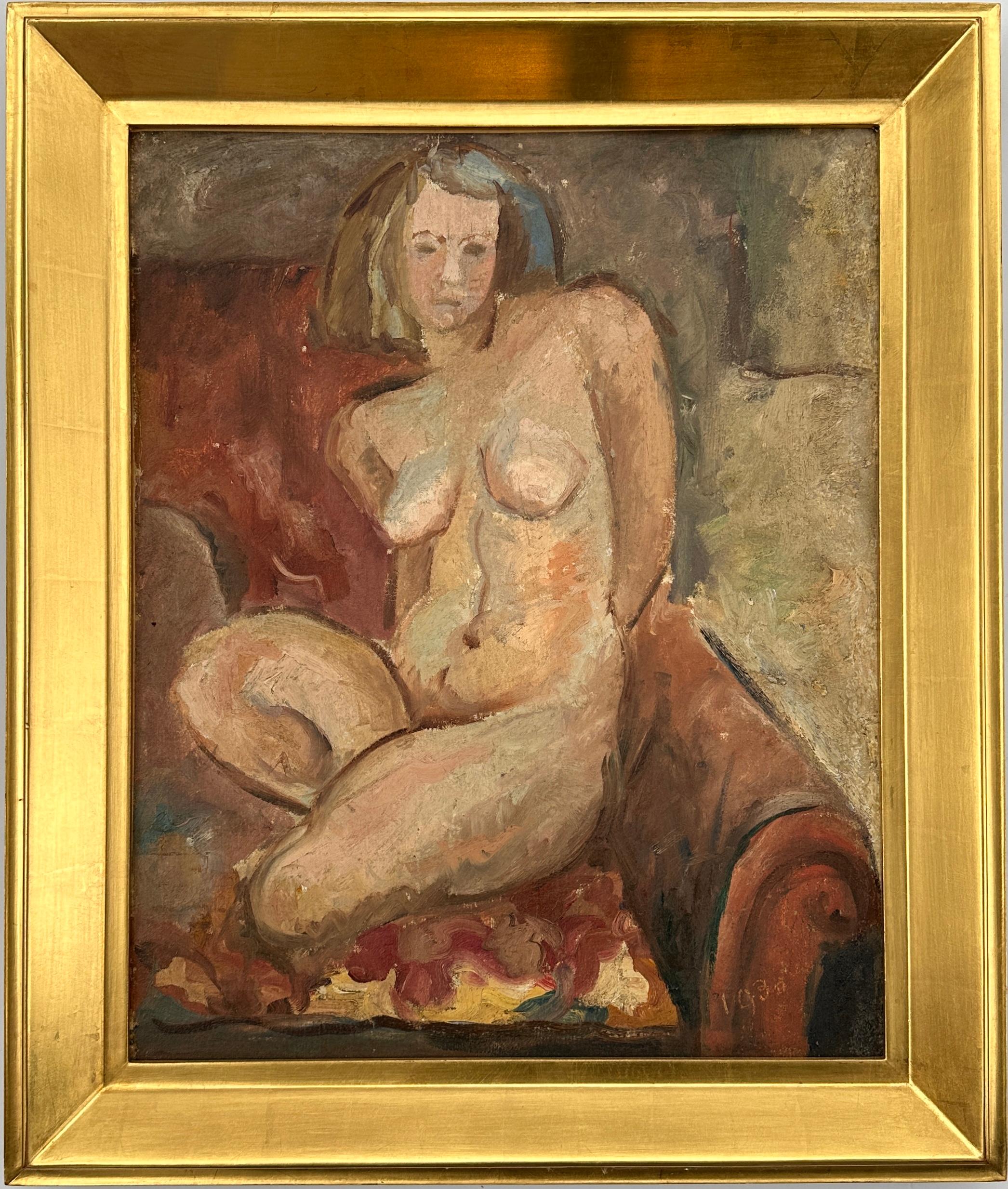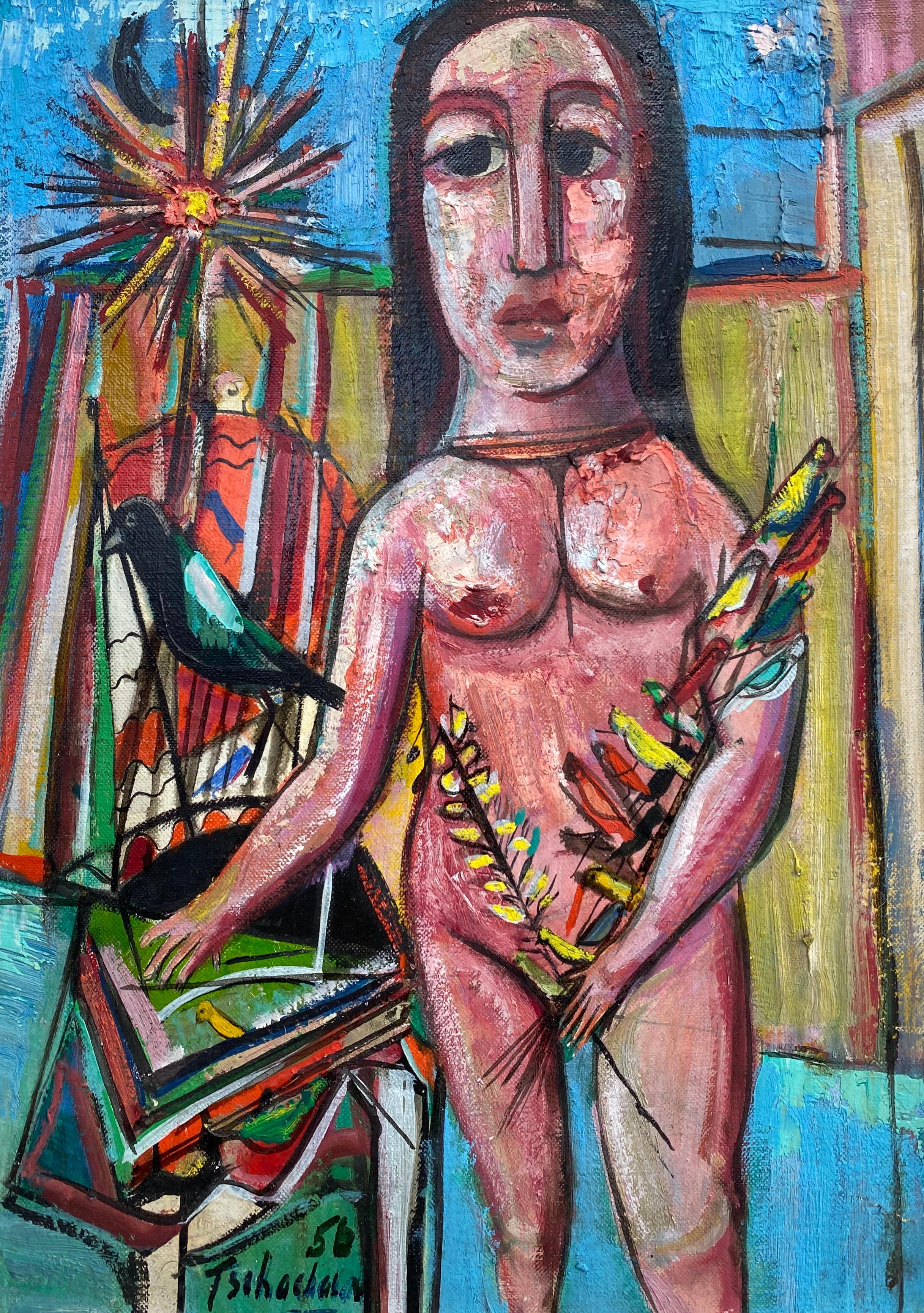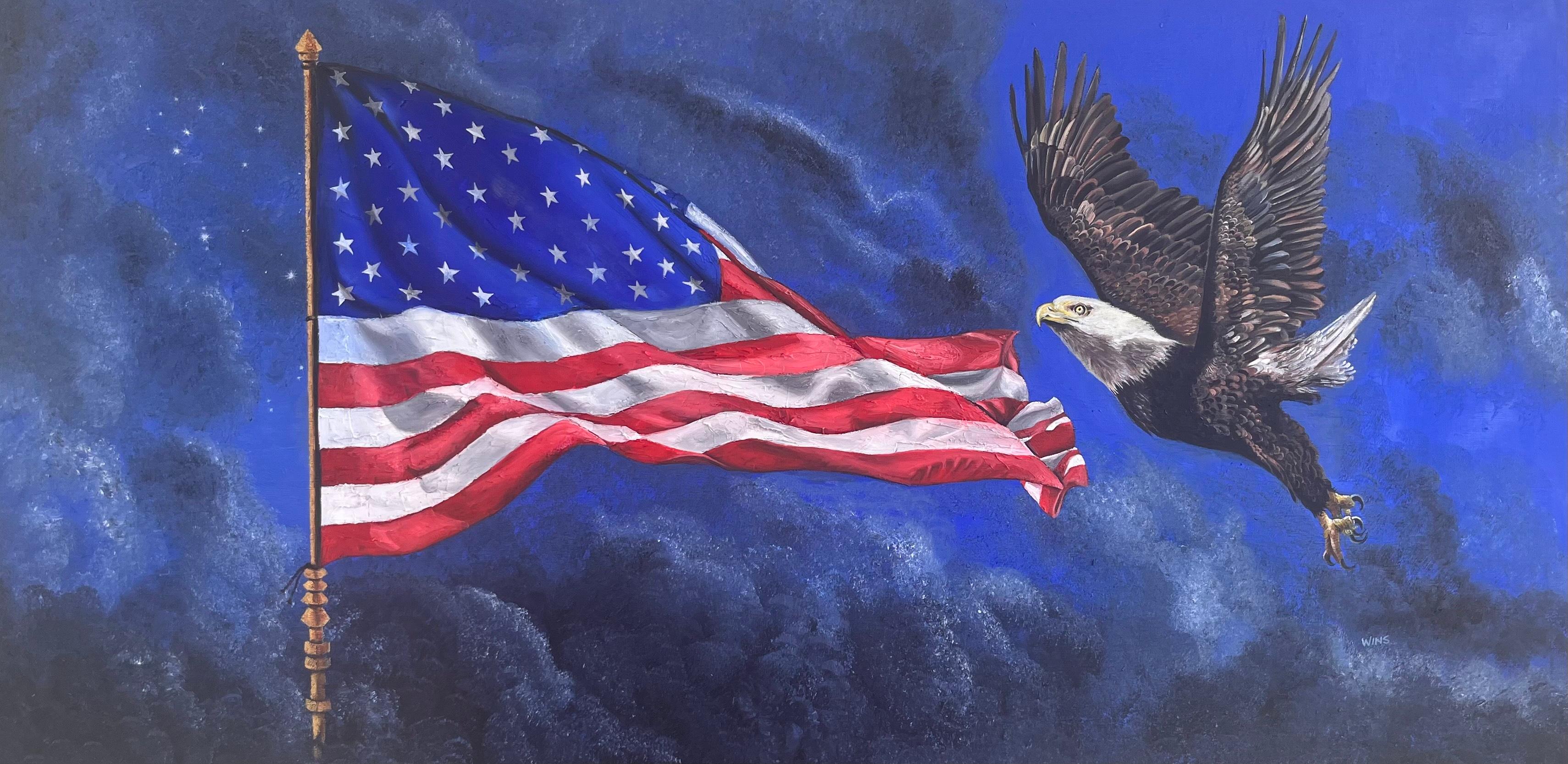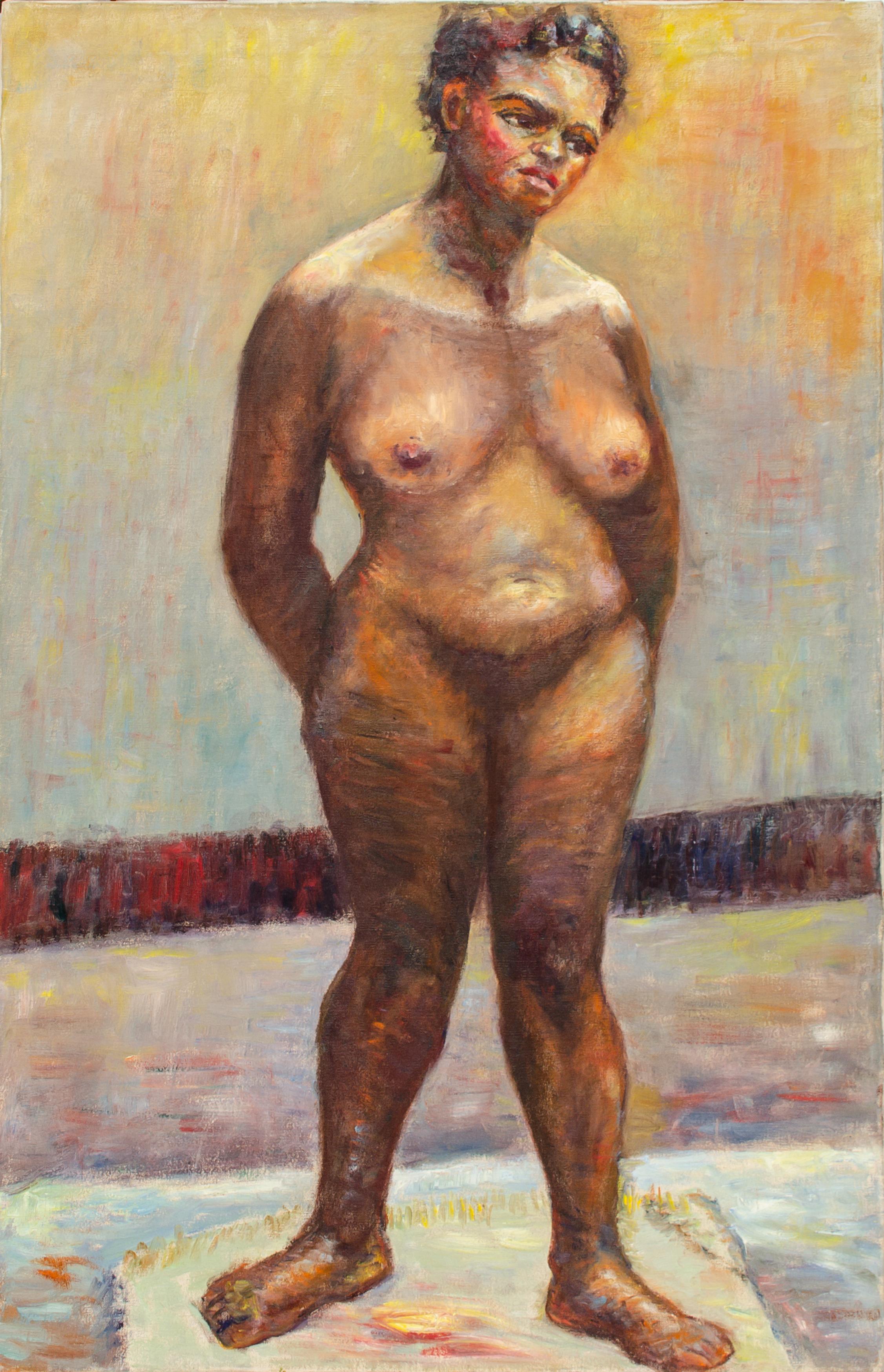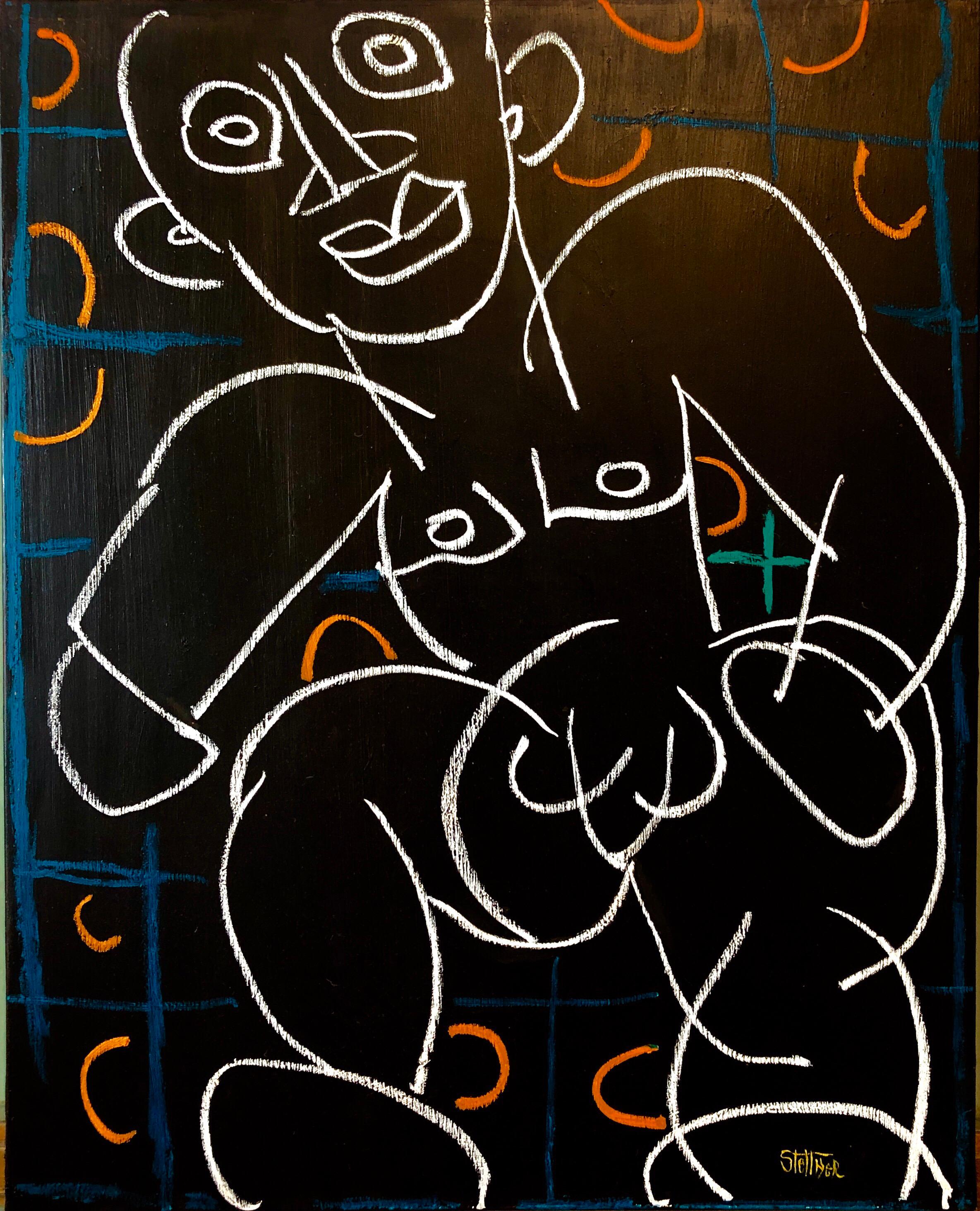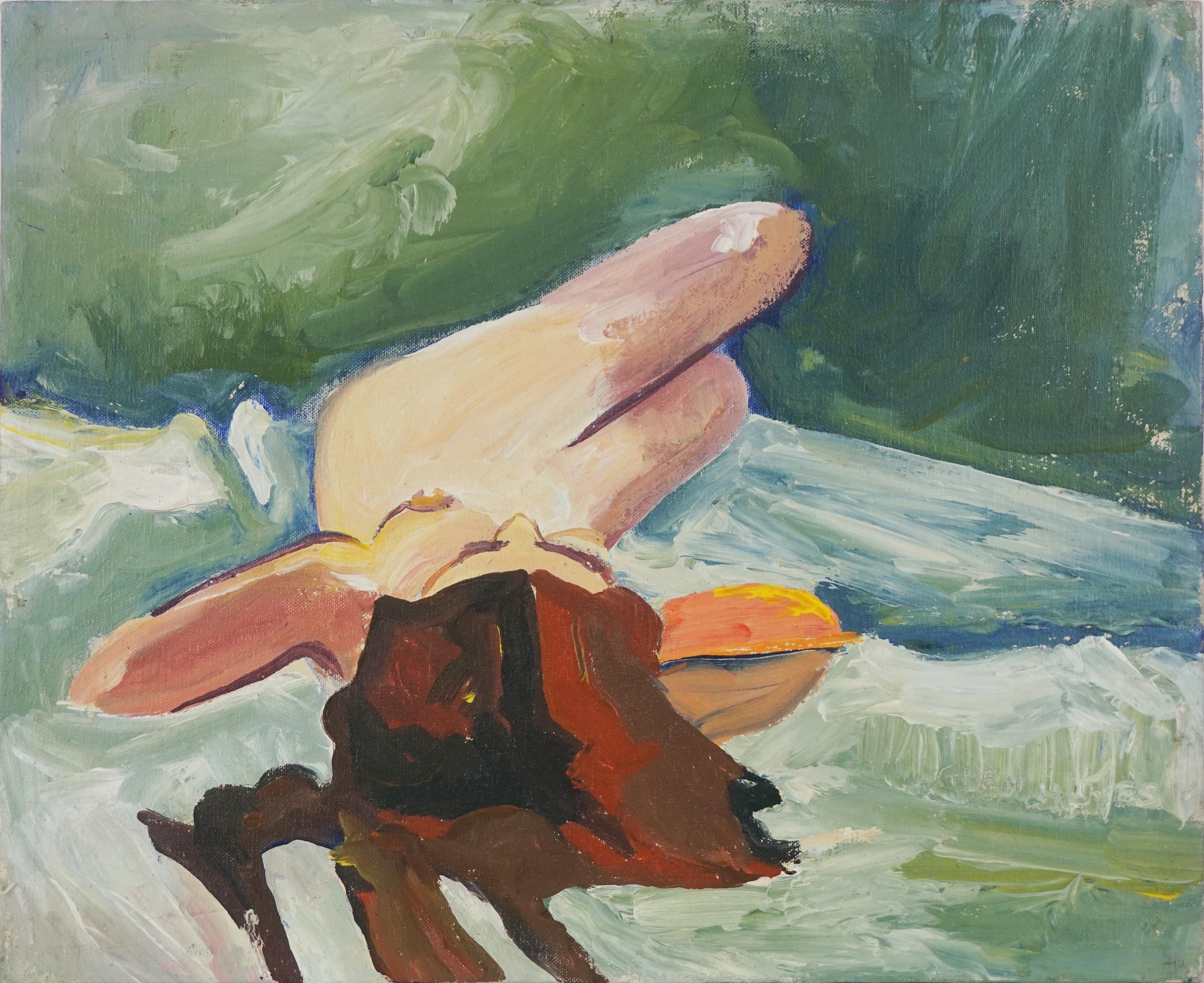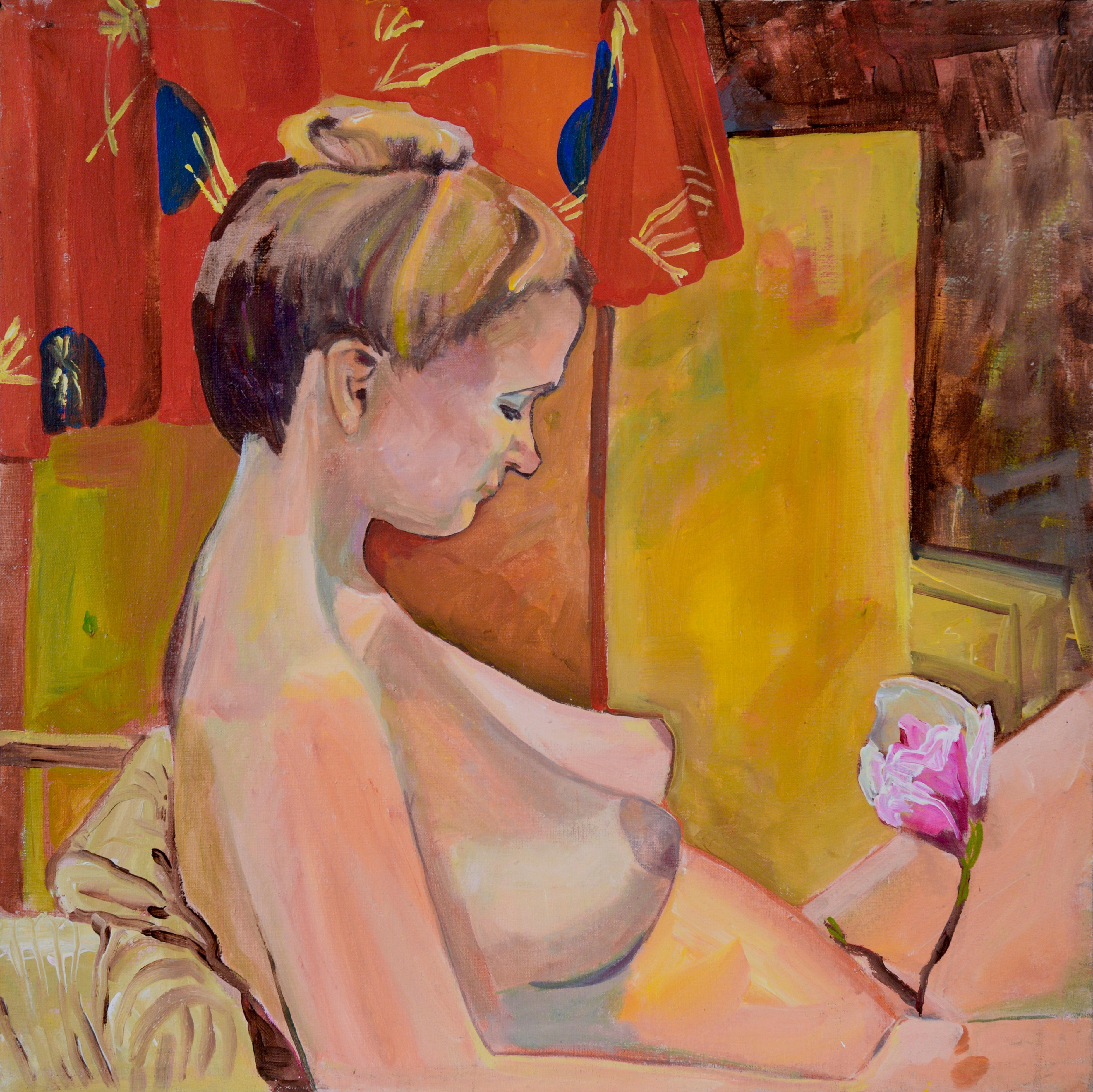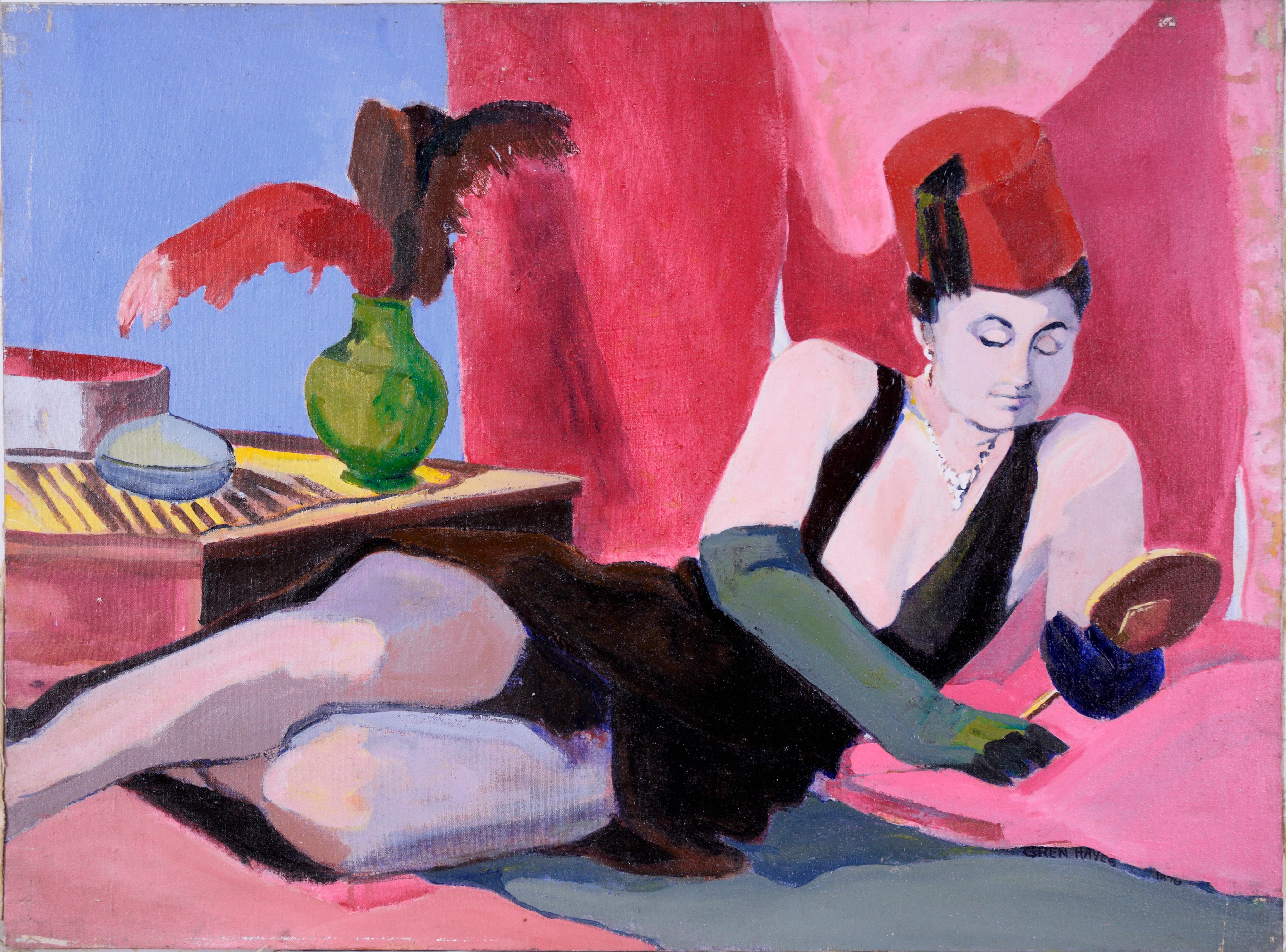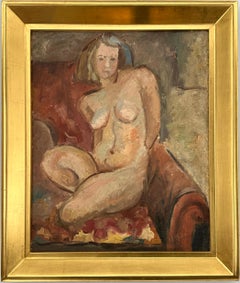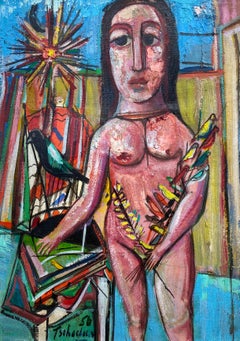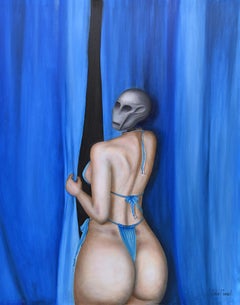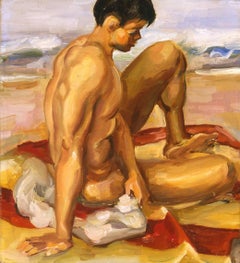
Bather
View Similar Items
1 of 4
Robert KennicottBatherCirca 1938
Circa 1938
About the Item
- Creator:Robert Kennicott (1892 - 1983, American)
- Creation Year:Circa 1938
- Dimensions:Height: 23 in (58.42 cm)Width: 21 in (53.34 cm)
- Medium:
- Movement & Style:
- Period:
- Condition:
- Gallery Location:Beverly Hills, CA
- Reference Number:1stDibs: LU43731455393
You May Also Like
- The Artist's Wife oil painting by Hans BurkhardtBy Hans BurkhardtLocated in Hudson, NYHans Burkhardt The Artist's Wife (1930) Oil on canvas, 20" x 16" 24" x 20 ½" x 1 ½" framed Dated 1930 lower right recto. Annotated "To Elsa HB Louise Burkhardt 1930. HB" verso. ...Category
1930s American Modern Nude Paintings
MaterialsOil, Canvas
- “Woman with Birds”By Nahum TschacbasovLocated in Southampton, NYOriginal mid-century modern oil on canvas board painting of a woman with birds by the well known Russian/American artist Nahum Tschacbasov. Signed and ...Category
1950s American Modern Nude Paintings
MaterialsOil, Canvas
$2,800 Sale Price33% Off - Smash or PassLocated in New York, NY2023, Oil on canvasCategory
2010s American Modern Figurative Paintings
MaterialsCanvas, Oil
- PowerLocated in New York, NY2023, Oil on canvasCategory
2010s American Modern Nude Paintings
MaterialsCanvas, Oil
$12,000 - Modernist Nude Figure Painting by Alma Davies, Student of Raphael SoyerLocated in Larchmont, NYAlma Davies Untitled, 1954 Oil on canvas 40 x 25 7/8 in. Signed verso: Alma Davies (illegible inscription) Dated verso: 3/5/54 Inscribed on stretcher bar: Student of Raphael Soyer W...Category
1950s American Modern Nude Paintings
MaterialsCanvas, Oil
- Rare Modernist Oil Painting Line Drawing Nude Man Louis StettnerBy Louis StettnerLocated in Surfside, FLSigned and Dated Modern Line Drawing Oil Painting of Nude Man. Louis Stettner (November 7, 1922 – October 13, 2016) was an American photographer of the 20th century whose work included streetscapes, portraits and architectural images of New York and Paris. His work has been highly regarded because of its humanity and capturing the life and reality of the people and streets. Starting in 1947, Stettner photographed the changes in the people, culture, and architecture of both cities. Stettner also spent significant time sculpting and painting, as well as mixing his work and “painting” on some of his photographic images. He continued to photograph New York and Paris up until his death. Louis Stettner was born in Brooklyn, New York, to Austrian immigrant parents where he was one of four children. His father was a cabinet maker, and Louis learned the trade when young, using the money he earned to support his growing love of photography. He decides to be a photographer after seeing photographs by Alfred Stieglitz and Weegee. He was given a box camera as a child, and his love affair with photography began. His family went on trips to Manhattan and visited museums, including the Metropolitan Museum of Art, where his love of art began. At 18, in 1940, Stettner enlisted in the United States army and became a combat photographer in Europe for the Signal Corps. After a brief stint in Europe he was sent to New Guinea, the Philippines, and Japan. Back from the war he joined the Photo League in New York. Through the Photo League’s exhibits, Stettner was further exposed to the work of Weegee, Edward Weston, and Lewis Hine. Stettner visited Paris in 1946 and in 1947 moved there. From 1947 to 1949 he studied at the "Institut des Hautes Études Cinématographiques" in Paris and received a Bachelor of Arts in Photography & Cinema. He went back and forth between New York and Paris for almost two decades and finally settled permanently in Saint-Ouen, near Paris, in 1990. Stettner still frequently returned to New York. Stettner's professional work in Paris began with capturing life in the post-war recovery. He captured the everyday lives of his subjects. In the tradition of the Photo League, he wanted to investigate the bonds that connect people to one another. In 1947 he was asked by the same Photo League to organize an exhibition of French photographers in New York. He gathered the works of some of the greatest photographers of the era, including Robert Doisneau, Brassaï, Edouard Boubat, Izis Bidermanas, and Willy Ronis. The show was a big success and was largely reviewed in the annual issue of U.S. Camera. Stettner had begun a series of regular meetings with Brassaï who was a great mentor and had significant influence on his work. In 1949, Stettner had his first exhibition at the "Salon des Indépendants" at the Bibliothèque Nationale, Paris. In 1951 his work was included in the famous Subjektive Fotografie exhibition in Germany. During the 1950s he free-lanced for Time magazine, Life, Fortune, and Du (Germany). While in Paris he reconnected with Paul Strand, who had also left New York because of the political intolerance of the McCarthy era—Strand had been a founder of the Photo League that would be blacklisted and then banned during those years. In the 1970s Stettner spent more time in New York City, where he taught at Brooklyn College, Queens College, and Cooper Union. In his own social realist work, Stettner focused on documenting the lives of the working class in both Paris and New York. He felt that the cities belong to the people who live there, not to tourists or visitors. His upbringing caused him to take great care in capturing the simple human dignity of the working class. He also captured noteworthy architectural images of both cities, including bridges, buildings, and monuments. Stettner produced well-known silver gelatin prints in fine images, including: Aubervilliers, Brooklyn Promenade...Category
21st Century and Contemporary American Modern Figurative Paintings
MaterialsCanvas, Oil
